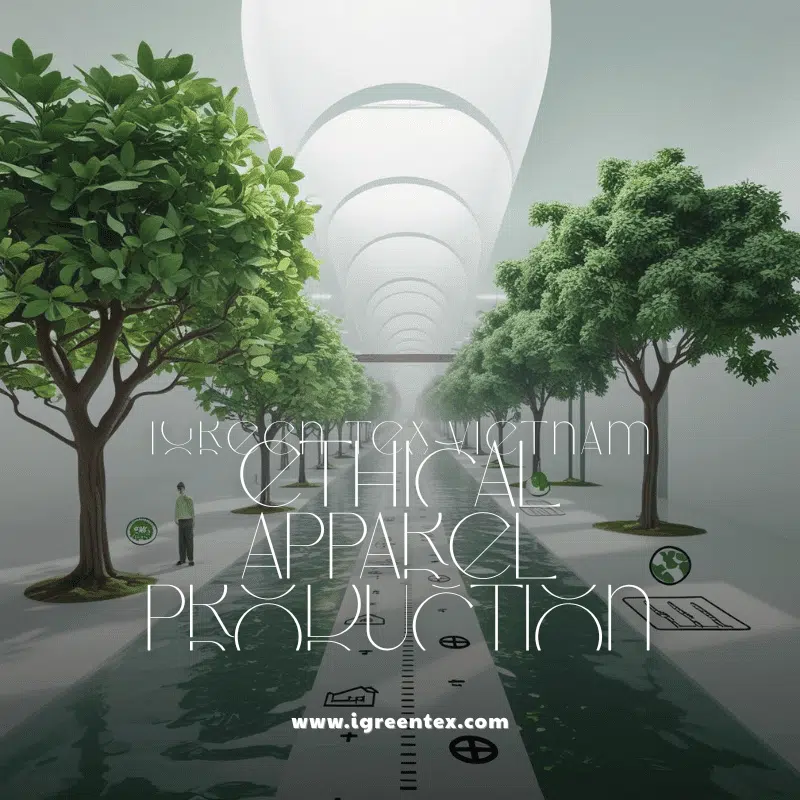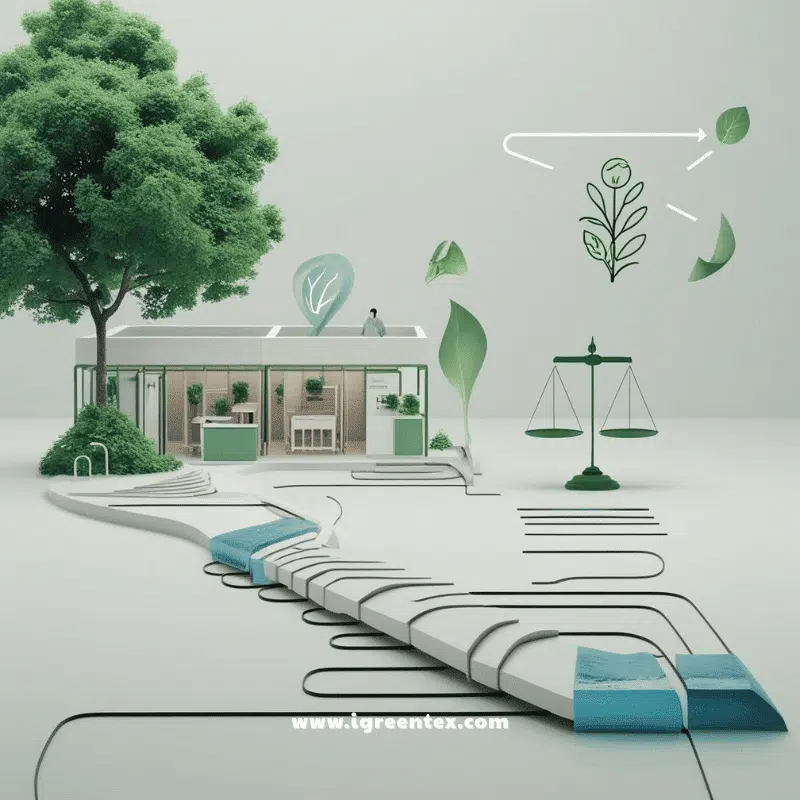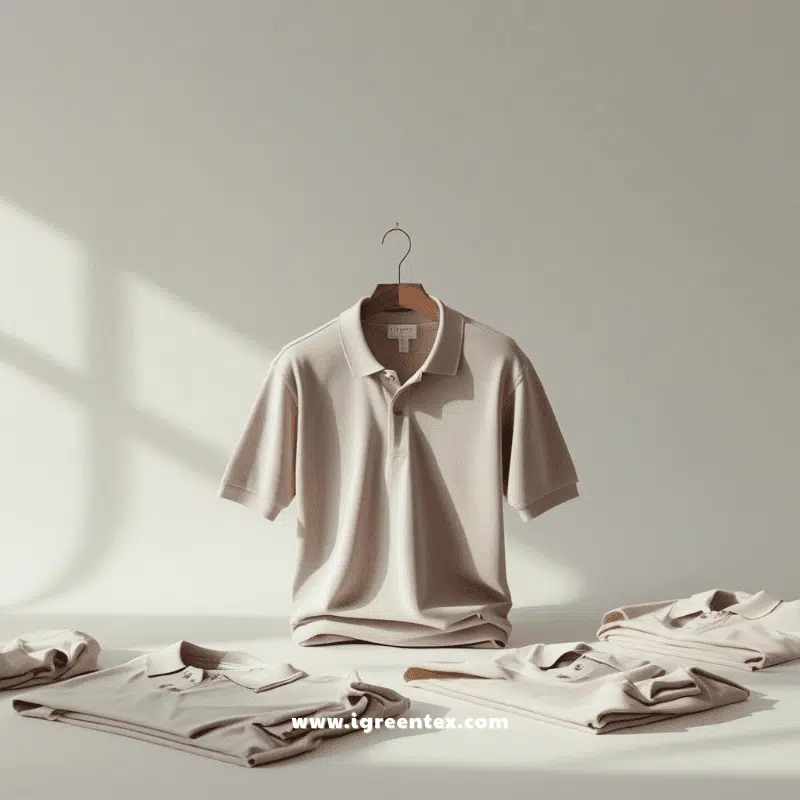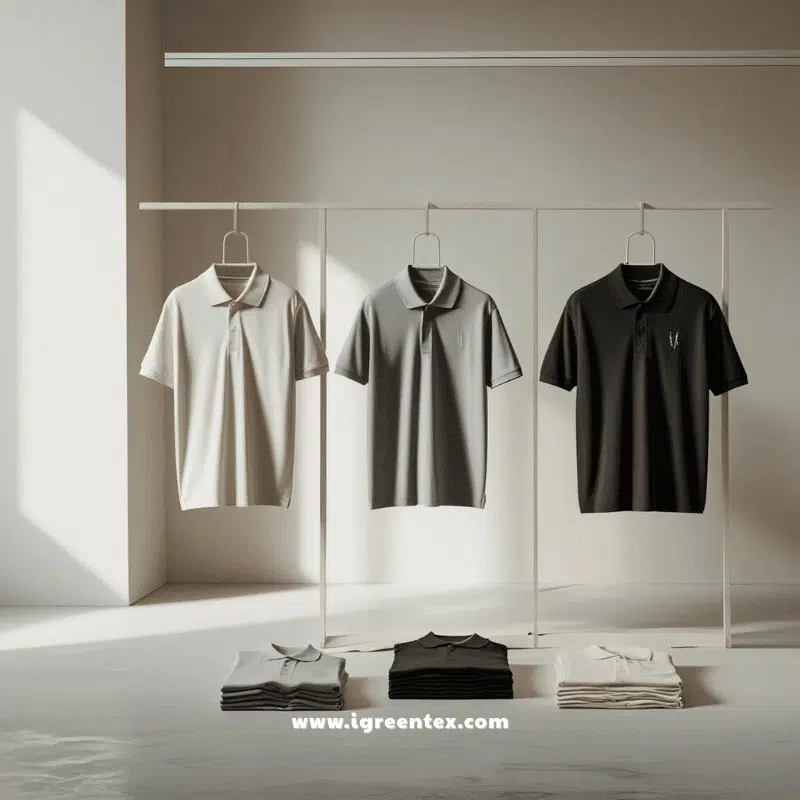From Commitment to Reality: Overcoming Challenges in Implementing Ethical Apparel Production in Vietnam with iGreen Tex
Let me be honest with you. Three years ago, I stood in front of our team and made a promise. We would become Vietnam’s most ethical garment manufacturer. We would treat workers fairly. We would use sustainable materials. We would be transparent about everything.
I believed every word. But I had no idea how hard it would be.

Today, I want to share our real story. Not the polished version you see on websites. The messy, difficult, sometimes frustrating journey of overcoming challenges in implementing ethical apparel production. Because if you’re a COO or operations leader trying to build an ethical supply chain, you need to know what you’re really getting into.
This isn’t about pointing fingers or making excuses. It’s about sharing what we learned so you can avoid our mistakes. It’s about showing that overcoming challenges in implementing ethical apparel production is possible, but it takes patience, creativity, and a lot of hard work.
See more: Vietnam Apparel Production Scalability for Streetwear Brand
See more: Ethical Streetwear Production Vietnam
See more: Vietnam’s Textile Innovation Hubs for Streetwear Development
See more: Risk Mitigation Strategies for Manufacturing Streetwear
See more: Quality Assurance Benchmarks for Vietnamese-Made Streetwear
See more: How to Build Partnerships Vietnamese Apparel Factories
The Promise vs. Reality
When we first committed to ethical production, everything seemed clear. We wrote beautiful policies. We created impressive presentations. We even printed posters for our factory walls. “Fair wages.” “Safe working conditions.” “Environmental responsibility.” The words looked great on paper.
But then Monday morning came.

Our first wake-up call happened when we tried to implement our new wage policy. We wanted to pay workers 15% above minimum wage. Sounds simple, right? But we quickly discovered that our biggest client couldn’t afford the price increase. They threatened to move their orders to a cheaper factory. We had to choose between our ethics and our business.
That’s when we realized that overcoming challenges in implementing ethical apparel production isn’t just about making good decisions. It’s about finding creative solutions that work for everyone. We spent three months working with that client to show them the business case for sustainable fashion manufacturing. We proved that better-paid workers make fewer mistakes. Higher quality means fewer returns. Fewer returns mean lower costs.

It worked. But it took time, data, and a lot of conversations.
The gap between promise and reality taught us something important. Ethical production isn’t a destination. It’s a journey. And every step requires overcoming challenges in implementing ethical apparel production.
Another reality check came when we discovered that our suppliers had different ideas about “ethical” than we did. We thought we were clear about our standards. But when we visited their facilities, we found problems. Poor ventilation in one factory. Overtime violations in another. Missing safety equipment in a third.
These discoveries were embarrassing. But they were also educational. We learned that overcoming challenges in implementing ethical apparel production means constant vigilance. It means building relationships with suppliers who share your values. It means being willing to walk away from partnerships that don’t meet your standards.

The process of overcoming challenges in implementing ethical apparel production forced us to become better communicators. We had to explain our standards clearly. We had to set expectations properly. We had to create systems for monitoring and feedback.
This education process took months. But it was essential. Without it, our ethical commitments would have remained just words on paper. The real work of overcoming challenges in implementing ethical apparel production happens in these daily conversations and relationships.
The Mountains We Had to Climb
Let me tell you about the real challenges we faced. Not the ones you read about in industry reports. The ones that kept me awake at night.

The Money Problem
Everyone talks about the cost of ethical production. But nobody talks about the cash flow problem. When you decide to pay workers better, you need that money upfront. When you choose sustainable materials, you often have to pay suppliers before you get paid by your clients.
We learned this the hard way. Six months into our ethical journey, we almost ran out of cash. We had committed to better wages, but three major clients delayed their payments. We had to take out a loan to cover payroll. That’s not something you see in sustainability reports.
The solution wasn’t elegant. We had to restructure our payment terms with clients. We asked for 30% upfront on all orders. Some clients refused. We lost business. But the ones who stayed understood that overcoming challenges in implementing ethical apparel production requires financial partnership.
The cost challenge taught us that overcoming challenges in implementing ethical apparel production isn’t just about good intentions. It’s about good business planning. We had to create budgets that included ethical costs. We had to build relationships with clients who valued our commitment. We had to prove that ethical production could be profitable.
This financial reality check was painful. But it was necessary. Without sustainable finances, our ethical commitments would have failed. The process of overcoming challenges in implementing ethical apparel production requires both moral commitment and business sense.
We also learned that costs aren’t just about money. They’re about time, energy, and relationships. Every ethical improvement requires investment in training, monitoring, and communication. The true cost of overcoming challenges in implementing ethical apparel production includes all these hidden expenses.
The Supply Chain Puzzle
Here’s something that will surprise you. The hardest part of ethical production isn’t what happens in your factory. It’s what happens three levels down in your supply chain.
We thought we were buying ethical cotton. Our supplier said it was organic. We had certificates. But when we did our own investigation, we found that the cotton farm was using child labor. The supplier didn’t know. The certification company didn’t know. But the children were still working in the fields.

That discovery changed everything. We realized that choosing sustainable fabrics for apparel brands isn’t just about the fabric. It’s about knowing every step of the process. We had to build our own audit system. We had to visit farms. We had to talk to workers directly.
Now we work with only five fabric suppliers. We know their suppliers. We know their suppliers’ suppliers. It took two years to build this network. But it’s the only way to ensure that overcoming challenges in implementing ethical apparel production actually means something.
Building a transparent sustainable supply chain for global streetwear brands vietnam became our obsession. Not because it was easy, but because it was necessary.
The supply chain challenge taught us that overcoming challenges in implementing ethical apparel production requires detective work. You can’t just trust certificates. You can’t just believe promises. You have to verify everything yourself.
This verification process is expensive and time-consuming. But it’s essential. Without it, you’re just passing problems down the chain. The real work of overcoming challenges in implementing ethical apparel production happens in these deep supply chain relationships.
We also learned that supply chain transparency isn’t just about finding problems. It’s about helping suppliers improve. Many of our partners wanted to be more ethical. They just didn’t know how. By working together, we’ve helped them implement better practices. This collaborative approach has made overcoming challenges in implementing ethical apparel production more effective and sustainable.
The Distance Problem
Most of our clients are based in Europe or North America. They want ethical production, but they can’t monitor it daily. They have to trust us. But trust isn’t enough when you’re dealing with overcoming challenges in implementing ethical apparel production.
We had one client who visited us twice a year. They would audit our factory, check our records, and leave satisfied. But they never saw what happened between visits. They didn’t know that we were struggling with a supplier who was cutting corners on environmental standards. They didn’t know that we were having problems with a subcontractor who wasn’t following safety protocols.
We solved this by creating a monthly transparency report. Not just numbers, but real stories. We share our challenges. We admit our mistakes. We show how we’re fixing problems. This honesty was scary at first. But it built stronger relationships with our clients.
The distance problem taught us that overcoming challenges in implementing ethical apparel production requires new forms of communication. Traditional audits aren’t enough. You need ongoing dialogue. You need shared responsibility. You need trust built on transparency.
We also learned that distance isn’t just about geography. It’s about cultural understanding. Our European clients care most about environmental issues. Our American clients focus on worker rights. Our Asian clients prioritize quality and efficiency. Understanding these differences is crucial for overcoming challenges in implementing ethical apparel production.
The solution was to create different communication strategies for different clients. We learned to speak their language. We learned to focus on their priorities. We learned to show how our ethical practices support their specific goals. This customized approach made overcoming challenges in implementing ethical apparel production more effective.
The Culture Challenge
This was perhaps the hardest mountain to climb. Not because our workers didn’t care about ethics. But because ethical production means different things to different people.
For our European clients, environmental protection was the top priority. They wanted us to implement water conservation techniques in textile industry vietnam. For our American clients, worker safety was most important. For our local workers, fair wages mattered most.
Everyone was right. But trying to satisfy everyone at once was overwhelming. We had to learn to prioritize. We had to make hard choices. We had to communicate constantly about why we were making these choices.
The breakthrough came when we realized that overcoming challenges in implementing ethical apparel production isn’t about choosing between different ethical priorities. It’s about finding ways to address all of them systematically.
The culture challenge also taught us that overcoming challenges in implementing ethical apparel production requires education on all sides. We had to teach our clients about local conditions. We had to teach our workers about global standards. We had to teach our suppliers about new requirements.
This educational process is ongoing. Culture doesn’t change overnight. But small changes add up over time. The key to overcoming challenges in implementing ethical apparel production is patience and persistence.
We also learned that culture change requires leadership from the top. If management doesn’t demonstrate ethical behavior, workers won’t follow. If clients don’t support ethical practices, suppliers won’t invest. The responsibility for overcoming challenges in implementing ethical apparel production starts with leadership commitment.
Our Compass and Tools
After three years of struggles, we developed some practical solutions. These aren’t perfect solutions. But they work for us. They might work for you too.
The Partnership Approach
We stopped seeing ethical production as our responsibility alone. We started seeing it as a shared challenge with our clients. Now, before we take any order, we have a conversation about ethics. We explain our standards. We ask about their priorities. We agree on what success looks like.
This approach helped us lose some clients. But it also helped us build stronger relationships with the ones who stayed. When challenges arise, we solve them together. When costs increase, we share them. When problems happen, we communicate immediately.
The partnership approach changed our understanding of overcoming challenges in implementing ethical apparel production. It’s not about perfect compliance. It’s about continuous improvement. It’s about shared responsibility. It’s about honest communication.
We learned that clients want to be part of the solution. They want to help with overcoming challenges in implementing ethical apparel production. But they need to understand the challenges first. They need to see the real costs. They need to be part of the planning process.
The Local Network Strategy
We learned that overcoming challenges in implementing ethical apparel production is easier when you’re not alone. We built a network of local suppliers who share our values. We share information. We share resources. We even share costs sometimes.
For example, when we needed to implement new environmental standards, we worked with three other factories to hire a shared consultant. It cost less for everyone. It created consistency across our supply chain. It made the whole process more efficient.
This network approach has made overcoming challenges in implementing ethical apparel production more sustainable. When one factory faces a problem, others can help. When one supplier develops a new solution, everyone benefits. When one client has a new requirement, we can adapt together.
The local network also helps with cultural challenges. When factories work together on ethical standards, it creates peer pressure. It normalizes good practices. It makes overcoming challenges in implementing ethical apparel production feel less like a burden and more like a shared mission.
The Technology Solution
We invested in simple technology to track our progress. Not expensive software. Just basic systems that help us monitor wages, working hours, environmental data, and quality metrics. We share this data with our clients monthly.
The real breakthrough was when we started sharing this data with our workers too. They could see how their factory was performing. They could see how their wages compared to industry standards. They could see the environmental impact of their work.
Transparency works both ways. When workers understand why we’re making certain decisions, they support those decisions. When clients understand our real challenges, they help us solve them.
Technology has made overcoming challenges in implementing ethical apparel production more manageable. But it’s not about fancy systems. It’s about simple, consistent tracking. It’s about sharing information. It’s about using data to drive improvement.
We also learned that technology can help with training. We created simple videos to teach workers about safety procedures. We developed apps to track environmental improvements. We used online platforms to communicate with suppliers. These tools have made overcoming challenges in implementing ethical apparel production more efficient and effective.
The Real Story: The Dye House Crisis
Let me tell you about our biggest challenge. And how we solved it.
Eighteen months ago, we discovered that one of our key suppliers was dumping untreated dye water into the local river. We had been working with them for five years. We trusted them. But they were lying to us.
We had three choices. We could ignore the problem and hope nobody noticed. We could quietly change suppliers and say nothing. Or we could confront the problem directly.
We chose the direct approach. We told our client what happened. We explained how we discovered the problem. We outlined our plan to fix it. We gave them the option to cancel their orders.
The client could have left us. Instead, they helped us solve the problem. They connected us with an environmental consultant. They helped us find a new supplier. They even helped us pay for the cleanup.
But here’s the most important part. We documented everything. We shared the story publicly. We turned our failure into a lesson for other manufacturers. This honesty about overcoming challenges in implementing ethical apparel production actually brought us new clients.
People trust companies that admit their mistakes. They trust companies that fix their problems. They don’t trust companies that claim to be perfect.
The dye house crisis taught us that overcoming challenges in implementing ethical apparel production isn’t about avoiding problems. It’s about solving them quickly and honestly. It’s about learning from mistakes. It’s about building systems to prevent future problems.
This experience also showed us that clients want to be partners in overcoming challenges in implementing ethical apparel production. They don’t want to be surprised by problems. But they respect companies that handle problems professionally.
The Communication Challenge
One lesson we learned is that overcoming challenges in implementing ethical apparel production isn’t just about production. It’s also about communication. How do you tell your story? How do you explain your values? How do you show your progress?
We learned that marketing sustainable fashion to conscious consumers requires honesty. Consumers are smart. They can tell when you’re hiding something. They can tell when you’re exaggerating. They respect companies that share their real journey.
Now we share our challenges openly. We post about our mistakes on social media. We write blog posts about problems we’re solving. We invite journalists to visit our factory. This transparency has become our strongest marketing tool.
The communication challenge taught us that overcoming challenges in implementing ethical apparel production requires storytelling skills. You need to explain complex issues simply. You need to show progress without claiming perfection. You need to build trust through transparency.
We also learned that different audiences need different messages. Workers need to understand how ethical practices benefit them. Clients need to understand how ethical practices benefit their brand. Consumers need to understand how ethical practices benefit society. The key to overcoming challenges in implementing ethical apparel production is matching your message to your audience.
The Road Ahead
Today, our factory employs 150 people. We pay wages that are 20% above minimum wage. We use 40% less water than we did three years ago. We have zero safety incidents this year. We work with clients who respect our values.
But we’re not done. Overcoming challenges in implementing ethical apparel production is an ongoing process. New challenges appear constantly. New opportunities emerge regularly. The key is to stay flexible, stay honest, and stay committed.
If you’re starting this journey, here’s my advice. Don’t try to be perfect on day one. Start with one area. Maybe it’s worker safety. Maybe it’s environmental impact. Maybe it’s supply chain transparency. Pick one thing and do it well. Then add another.
Find partners who share your values. Be honest about your challenges. Ask for help when you need it. Celebrate small victories. Learn from your mistakes. And remember that overcoming challenges in implementing ethical apparel production is a marathon, not a sprint.
The fashion industry needs more companies willing to take this journey. It needs more leaders willing to share their real stories. It needs more partnerships between brands and manufacturers who are committed to doing better.
Looking back, I realize that overcoming challenges in implementing ethical apparel production has made us a stronger company. It has attracted better clients. It has motivated our workers. It has improved our products. It has enhanced our reputation.
The challenges were real. The costs were significant. The problems were complex. But the benefits have been even greater. Our journey of overcoming challenges in implementing ethical apparel production has created value for everyone involved.
At iGreen Tex Vietnam, we’re proud to be part of this movement. We’re excited to work with brands who are ready to tackle these challenges together. We’re here to share our experience, our resources, and our commitment to ethical production.
The journey is difficult. But it’s worth it. For our workers, for our clients, for our industry, and for our planet. Every step forward in overcoming challenges in implementing ethical apparel production makes a difference.
If you’re ready to start this journey, or if you want to share your own experiences with overcoming challenges in implementing ethical apparel production, we’d love to hear from you. Contact us at iGreen Tex Vietnam. Let’s build a more ethical future for fashion together.
The process of overcoming challenges in implementing ethical apparel production never ends. But neither does the satisfaction of knowing that your work is making a positive difference in the world. That’s what keeps us going. That’s what makes it all worthwhile.
About IGREEN TEX
IGREEN TEX is a provider of fashion and textile products, offering a wide range of both domestically and internationally. Our commitment to quality ensures that our products not only meet the highest standards but also promote eco-friendly practices, in Vietnam sportswear manufacturing.
If you want to read more information about canvas bags, and if you want to tote bags at Tphcm, you can see it here!!!
To view product information click here
Visit our website to learn more about our products and services: IGREEN TEX
IGREEN TEX VIETNAM CO LTD
Address: No. 6 – 6A, D52 Street, Ward Bay Hien, HCMC
E-mail: info@igreentex.com
WhatsApp/Viber/Zalo: +84 938.045.900